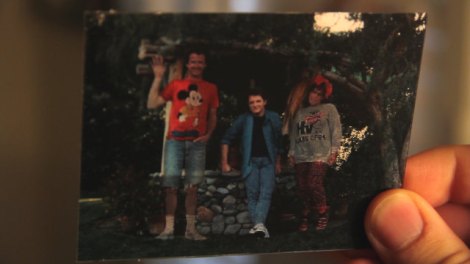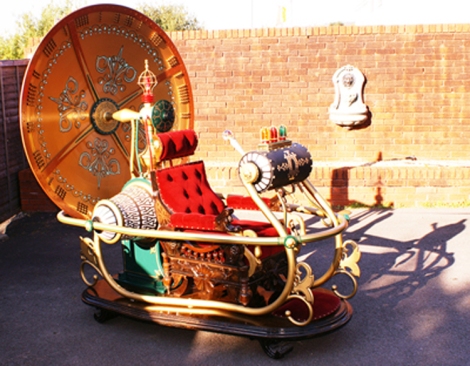Dear Syfy Channel,
As much as I’m enjoying your new 12 Monkeys series, it’s also really annoying. This is not entirely your fault. Time travel is typically a mess in films and TV shows. Why, for instance, does Cole’s time travel chair lean him backwards like an astronaut, and yet when he appears and disappears in the past, he’s in a standing position? And why does he not return to the same moment in time that he left? I realize the answer is story convenience—sometimes it’s fun to have things happen while he’s “gone”—but couldn’t the doctor spout some techno-babble explaining how the machine somehow locks the two time periods in sync? Otherwise the past is less a “when” and more like a “where,” a place that exists simultaneously with “now” and so moves forward at a parallel rate.
Cole’s mission is also a variation on Back to the Future and so suffers from a range of Michael-J.-Fox-fading-from-the-family-photo problems. For instance, when he loops back to a moment he’s already visited and alters it so this time his past self is accidentally shot in the arm, why does he experience the injury simultaneously with his past self? And why does the injury then turn into a sutured scar? At what point in time was the wound bandaged? Is the current Cole now a different Cole, the Cole who was injured in the past, and so then was the previous not-shot-in-the-arm Cole erased? If so, the new Cole wouldn’t even know something had been altered, because in fact “his” timeline hasn’t been altered, and so he would remember and have anticipated being shot—in which case, wouldn’t he take some precaution “now” to avoid it happening “again.” His whole mission is about altering past events, so there are no cosmic taboos like the kind the writers of Doctor Who keep having to invent, those inexplicably “fixed” points in time that make the plot work at the expense of everything else.
I realize this sort of internal consistency is not the top priority when writing action-oriented entertainment. The top priority for writers of action-oriented entertainment is to be entertaining. There is no correlation between a well-tempered time machine and high ratings. Though I would not be surprised if TV and film producers imagine the correlation is inverse, that the more time writers spend tinkering with the nuts and bolts of their nerdy plot devices, the less entertaining the show will be. And to a certain degree this is true, since sinking all of your effort into any one story element at the expense of the billion other story elements needed to make a story good is a great way to make a story very bad. Though at the other end of the spectrum, a story that ignores too many of those reality-securing nuts and bolts is going to score pretty high on viewers’ This-Is-Stupid meter. So most time-travel tales bounce around the middle, cutting corners while keeping the majority of their viewers’ frontal lobes intact.
But how about a time-travel story that’s both entertaining and makes sense? I realize “makes sense” is an oxymoron when talking about the impossible, but all I’m asking for is the appearance of plausibility. If that sounds like a pointless constraint on the creative process, remember that writers thrive on constraints—or as Robert Frost put it: “Writing free verse is like playing tennis with the net down.” 12 Monkeys could use a few nets.
So here’s one example of a plausible time machine. Begin by taking the traveler out of time travel. Start simpler. Think of it first as a “time phone.” Your machine sends and receives signals from the future. This is where a TV producer hangs up, because a show about people talking on phones sounds really boring, but the constraints create new possibilities. What if the future end of the phone is a robot? And if this end of the phone isn’t a phone but a Wii, then instead of a cartoon in a 2-D landscape, your avatar is a remote control android physically interacting with people in the future.
That nuts-and-bolt net also manufactures some potential plot tensions. Since anyone can throw on video goggles and Wii gloves, anyone can “travel” in time—but to the folks in the other time destination, “anyone” always looks exactly the same. You can never know for sure who is remote controlling the android—the good guys or the bad guys. This is great news for Orphan Black actress Tatiana Maslany since who else could play so many parts within a part? But if Maslany is busy, I nominate Enver Gjokaj based on his brilliant stint on the not-so-brilliant Dollhouse (he’s pretty good on Agent Carter too.)
Meanwhile, the folks working the Wii, they first have to build the android before they can dial the future with the blind hope that they (or future generations depending on how far into the future you’re dialing) will have maintained it. Since the Wii controls can exist in the future too, future people can also dial backwards in time, beginning at the moment the android is first switched on. So while the inventors are visiting the unknown future, the unknown future is visiting them.
If that doesn’t give a team of writers material for a season or two, you can always throw in an apocalypse—a worldwide plague, a rise of the machines and/or apes, a dysfunctional family in need of an emotional reboot. Maybe Michael J. Fox can use Matrix technology to active an Arnold robot and prevent his parents from being zombified before he’s born so he can overthrow the Morlocks after he grows up to be Bruce Willis?




